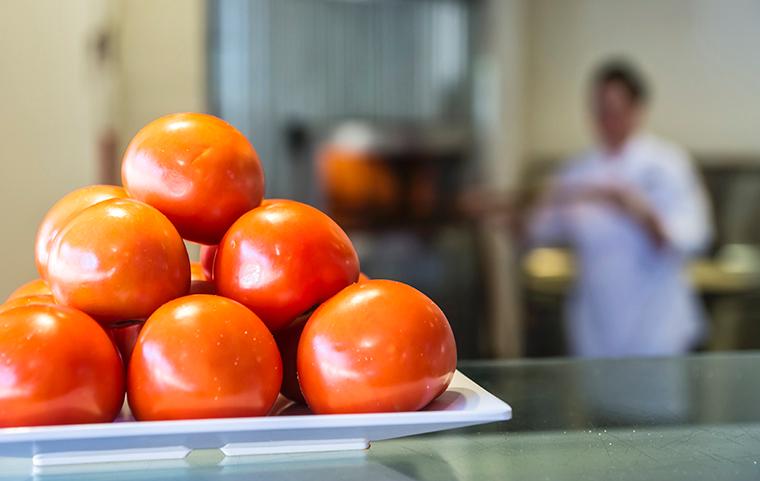
Environmental Studies and Sciences Students Tackle Hunger in Silicon Valley
We promote a culture of service—not only to those who study and work at Santa Clara but also to disadvantaged members of our community as we work to build a more humane, just, and sustainable world. Students working with Professor Chris Bacon examined the harsh realities of hunger in Silicon Valley. Their efforts are helping to improve services that combat food insecurity in the region and providing hands on experience making a difference in the community. This article originally appeared in Santa Clara Magazine.
Where’s Lunch?
Grace Ogihara
A team of environmental science seniors examined the harsh realities of hunger—right here in Silicon Valley.
The question isn’t simply what you’re putting on your plate—but if there’s anything to eat all. If you are among the food insecure, as 14 percent of the population in our country is, you’ve got limited access to affordable, culturally appropriate, nutritious, and physically available food. So where are you? That’s a question SCU students have sought to help Silicon Valley answer.
In 2014–15, SCU students worked with scholar Chris Bacon, an associate professor of environmental studies and sciences, and Greg Baker, director of the Food and Agribusiness Institute, to study food security in Santa Clara County. Later in 2015–16, Bacon helped another group of students tackle research on food security in San Mateo County—ranked as one of the wealthiest counties in the nation.
Hanouf Al Jijakli ’16, George Bunkall ’16, Lauren Cloward ’16, and Julia Tawney ’16 embarked on the most recent project. They collaborated with Second Harvest Food Bank of Santa Clara and San Mateo Counties (SHFB), which provides food to more than a quarter million people each month—one in 10 people.
Their study finds that overall SHFB serves the county well, but 10 priority areas with potentially high food insecurity (idenfitied by poverty, unemployment, and rental rates) and low access to food agencies were identified in San Mateo County. Students tackled two aspects of food security: proximity and awareness. For proximity: Find areas of need not already being addressed by food assistance services. Awareness: Find how information about food assistance programs could be best communicated to clients. They compared forms of communication and the role of social media.
From interviews and surveys at two distribution sites, they found that the best initial outreach is word of mouth, followed by continuing the relationship through social media. And social media was recognized as underutilized—especially on specific types of food being distributed.
Geographic Information Systems enabled students to map distance and demographics on a spatial plane. “When food banks want to expand in new areas they can pinpoint areas that are in the most need,” says Lauren Cloward.
An interactive map has been created using GIS, and it is now available on the SHFB website. Cloward, who graduated with degrees in political science and environmental studies, has also studied in Morocco, worked in Kolkota, India, as an SCU Global Fellow, and traveled to Cuba with the Food and Agribusiness Institute. She is leading efforts to publish the group’s research in The Professional Geographer.
This article originally appeared in Santa Clara Magazine.
Related Content
Food & Agribusiness Institute Research and Initiatives
Santa Clara University Center for Sustainability